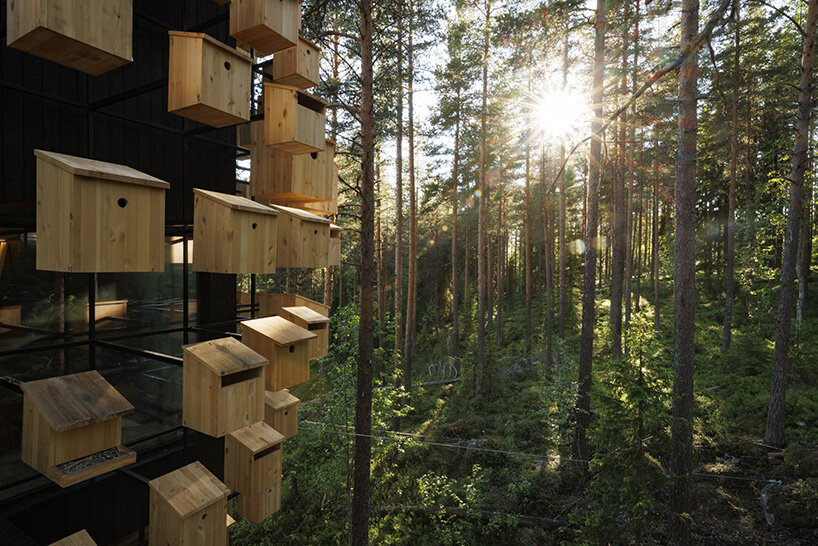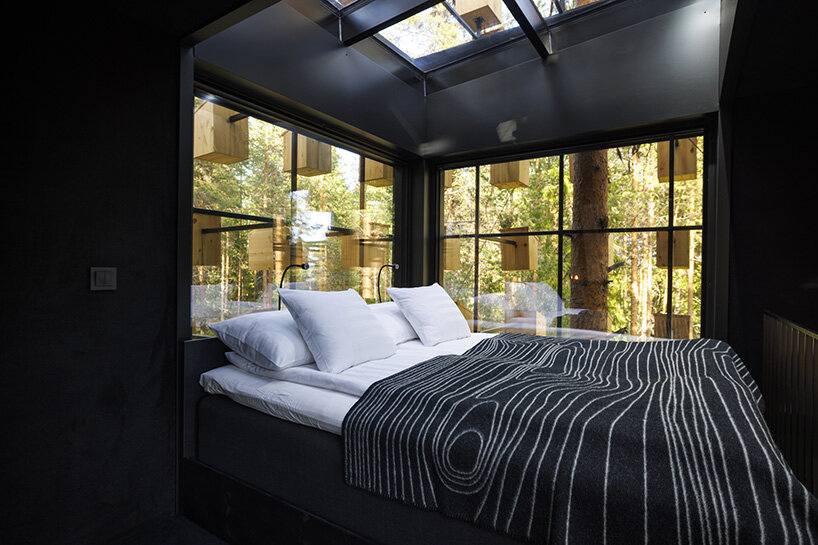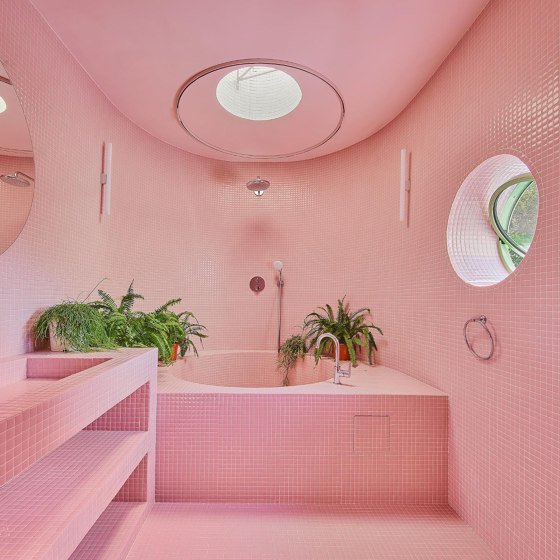bjarke ingels group’s ‘biosphere’ treehouse hotel floats among 350 birdhouses
surround yourself in a bjarke ingels-designed ‘biosphere’
Suspended among the trees of northern Sweden and wrapped in a flock of birdhouses, Bjarke Ingels Group‘s Biosphere treehouse hotel is now open for guests — both humans and birds alike. The boutique, 34 square meter suite has been designed for treehotel, marking the company’s eighth experimental guest room. See designboom’s previous coverage, with BIG’s fairytale-like visualizations here.
With its facade of timber bird nests, the nature lovers’ getaway has been designed in close collaboration with Swedish ornithologist Ulf Öhman and aims to ‘enhance the surrounding biosphere.’ The introduction of these tiny dwellings is not only for the benefit of bird-watchers — forestry has led to a decrease of natural holes found in tree trunks, a safe hiding place for bird nests.
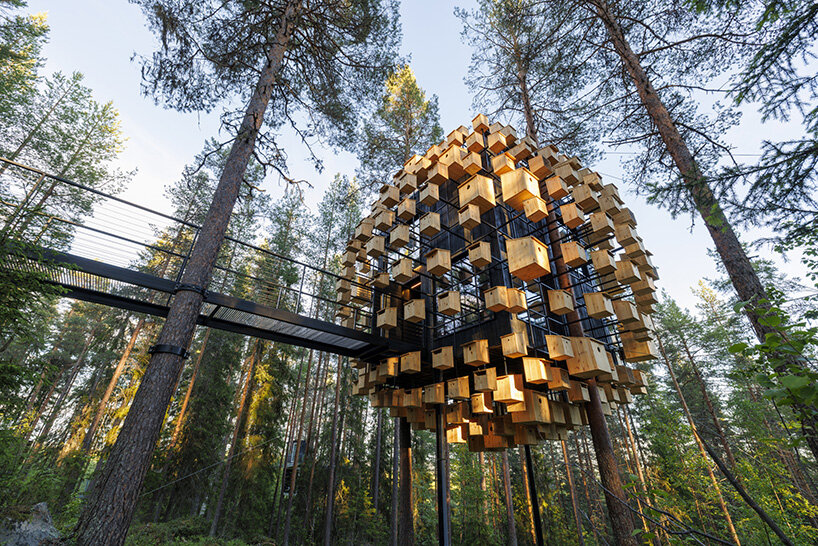 images courtesy Bjarke Ingels Group / BIG
images courtesy Bjarke Ingels Group / BIG
a treehotel by big: responding to the needs of the forest
The design team at Bjarke Ingels Group / BIG shape its Biosphere hotel to withstand the strong climatic contrasts of its forested site of the Swedish Lapland. The architects note that the seasons have required highly resilient architectural types which commonly incorporate locally sourced timber and stone. BIG’s response to the site’s difficult climate and environmental requirements is in line with the ethic of Treehotel (see here), whose eight unique cabins each have a distinct identity that reacts differently with the forest.
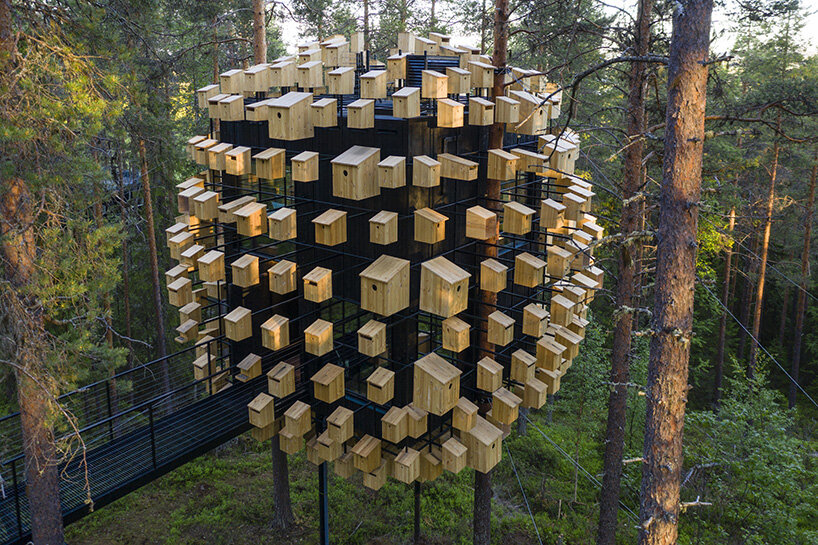
inside the space
Inside, Bjarke Ingels Groups’s Biosphere treehouse hotel is defined by simple and pragmatic interiors. The suite is accessed by way of a suspended bridge that slopes from the ground to the top of the trees. The interior is defined by its rich, dark interiors and organic material palette which takes inspiration from the surrounding landscape. This toned-down atmosphere aims to encourage an outward-looking gaze so that visitors will focus less on the suite and more on the forest’s natural beauty.
Even with this minimalist approach, the ‘checker solid-open’ structure naturally generates a range of different experiences within the tiny space. Guests have access to a roof terrace among the treetop canopies with 360-degree views of the forest. Because the bird nests each take shape with varying sizes and distances — informed by the bird type and its frequency in the area — light filters through the unique facade and views are maintained of the forest beyond.
Wrapped in an ecological habitat, visitors to BIG’s Treehotel can experience birdlife up close and ‘exist in the epicenter of nature unfolding.’ The architects comment: ‘Surrounded by subtle bird song – balanced by the exterior triple glazing façade – guests are provided with an intimate, immersive nature experience.‘
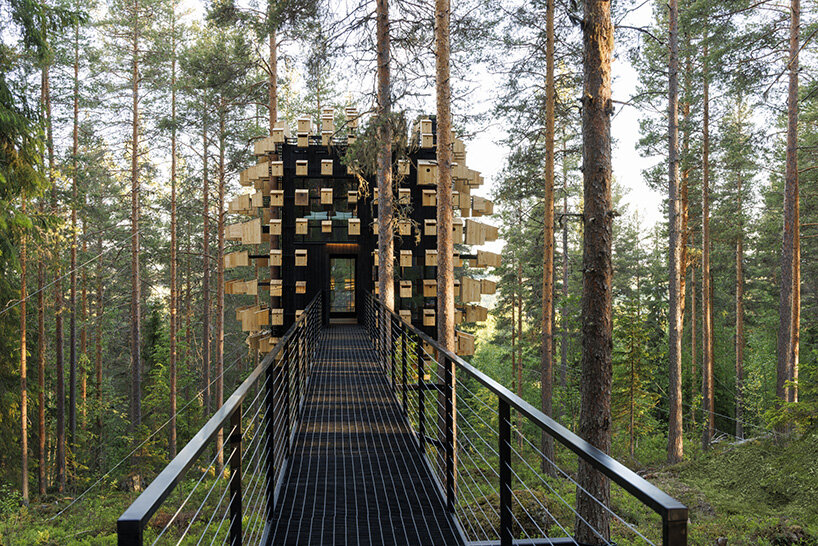
replacing birds’ natural dwellings lost to forestry
Ulf Öhman, chairman of the Norrbotten Ornithological Association explains: ‘Inventories in Norrbotten County, carried out both by us as ornithologists and by the County Administrative Board, show that a number of different bird populations are decreasing. Forestry has led to a reduced number of natural holes in trees where breeding bird nests.
‘The installation of bird nests is therefore an important measure to take. Furthermore, climate change leads to the insect boom happening earlier in the year, and by the time the birds’ eggs hatch, the boom has already passed. Feeding is an important support mechanism for the birds that stay in Northern Sweden and require food during winter.
‘Demonstrating the use of bird nests and feeding, not just at the Treehotel but for people to install near their own homes, is valuable. An initiative from Treehotel to take such measures may inspire their visitors to do the same.‘
